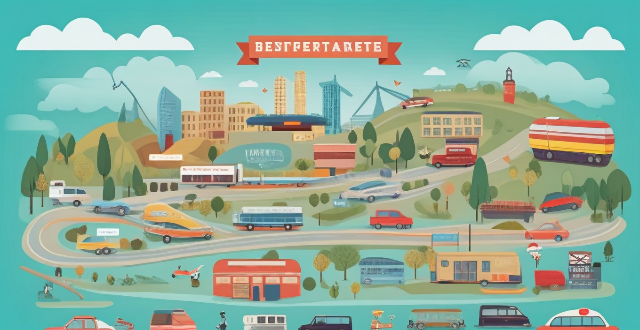The text discusses the benefits of using public transportation and carpooling, emphasizing their advantages in reducing traffic congestion, cost-effectiveness, environmental benefits, increased accessibility, stress-free travel, saving money, decreasing environmental impact, improving commute experience, creating opportunities for networking, and reducing wear and tear on vehicles. It concludes that these options offer numerous advantages ranging from financial savings to environmental benefits, providing efficient ways to navigate busy cities, reduce individual carbon footprints, and contribute to a greener, more connected, and less congested community.

Advantages of Using Public Transportation or Carpooling
Public Transportation
*Reduced Traffic Congestion*
Using public transportation can significantly reduce the number of vehicles on the road, leading to less traffic congestion during peak hours. This is particularly beneficial in urban areas where traffic can be a major issue.
*Cost-Effectiveness*
Public transportation is generally more affordable than owning and operating a private vehicle. It eliminates costs such as gas, insurance, parking fees, and maintenance.
*Environmental Benefits*
Public transportation reduces carbon emissions by transporting more people with fewer vehicles. It also helps to decrease air pollution, making it an environmentally friendly option.
*Increased Accessibility*
For individuals who cannot drive or choose not to, public transportation provides a means of getting around. It offers opportunities for work, leisure, and social activities that might not otherwise be possible.
*Stress-Free Travel*
Riders can use their commute time to read, work, or relax instead of focusing on driving. Public transportation allows you to avoid the stress of traffic, finding parking spots, and navigating through unfamiliar areas.
Carpooling
*Save Money*
Sharing the cost of gas with other passengers can significantly reduce your travel expenses. Additionally, carpoolers can share tolls and parking fees, making it an economical choice.
*Decrease Environmental Impact*
Similar to public transportation, carpooling reduces the number of cars on the road, leading to fewer emissions and less pollution.
*Improved Commute Experience*
Carpooling often leads to a more enjoyable commute. You can talk, listen to music, or simply enjoy the company of others. It can turn a solitary drive into a shared experience.
*Create Opportunities for Networking*
Carpooling can provide a chance for professional networking, especially if you share rides with colleagues or individuals in your industry. It's a unique opportunity to build relationships outside of a traditional office setting.
*Reduced Wear and Tear on Your Vehicle*
When you carpool, you're not only saving money on gas but also reducing the mileage on your vehicle. This can extend the life of your car and reduce long-term maintenance costs.
Conclusion
Both public transportation and carpooling offer numerous advantages that range from financial savings to environmental benefits. They provide efficient ways to navigate busy cities, reduce individual carbon footprints, and can even lead to a more enjoyable commute. By choosing these options over single-occupancy vehicles, we contribute to a greener, more connected, and less congested community.